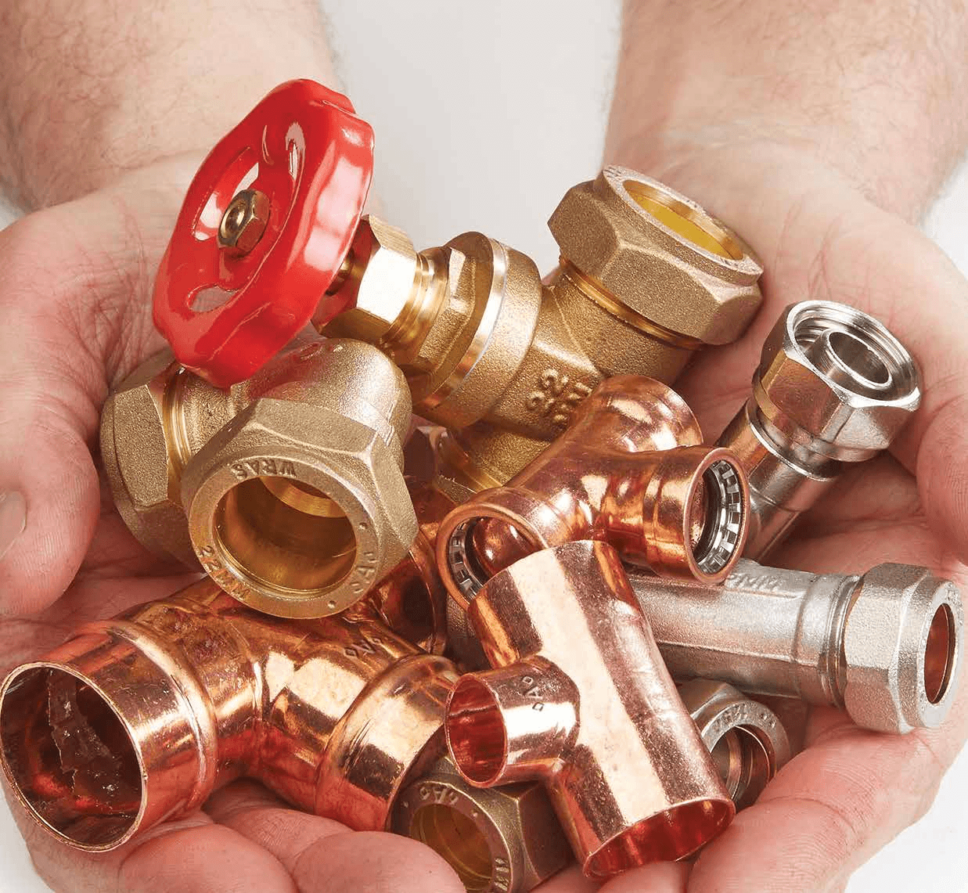Brass Compression Fittings from Stock

We offer brass compression fittings from stock in a range of sizes. Compression fittings for metal pipe coupling appear to have been first patented in 1943, with the application being made on 22nd July 1940 by Irving Cowle. We know nothing of the man who improved on the idea a compression coupling apart from the fact he was from The United States and had produced a fitting that did not leak. The description of the Patent suggests very strongly that this was an early version of its modern counterpart.
Compression fittings for copper pipe are sealed on an olive or ferrule depending on which part of the world you live in. The United Kingdom is the only place where the word olive is used to describe the copper ring that is compressed to make the seal on the pipe. The reason behind this is a ferrule (olive) tapers at both ends like the fruit, and the word ferrule for those that are curious comes from the Latin viriola meaning small bracelet.
Brass Compression Fittings on the Shelf
Here at ValvesTubesFittings.com we carry brass compression fittings from 15mm to 54mm in stock and can offer a matching size range in valve products. In addition, we can offer the full range of Table X copper tubes to complement this product and deliver to your requirements to the best of our ability.
We do carry alternatives to brass compression fittings to join copper tubes which include end feed, solder ring and press fittings in the sizes already quoted. All material is WRAS-approved and comes with a warranty of up to 40 years depending on the product range.
Installation of Compression Fittings
Brass compression fittings are simple to install if basic guidelines are followed; before installation, the copper tube should be deburred and cleaned with wire wool and cut square. Once this has been done, remove the nut from the end of the fitting and place it around the tube. Following this slide the olive (ferrule) onto the pipe then complete the first part of the installation by hand tightening the nut onto the body of the fitting.
To complete the seal, tighten with a spanner or wrench to the manufacturers recommended torque value. Over-tightening a compression fitting will damage the tube and the olive (ferrule), which will result in a leak. If a fitting has a slight leak when the installation is complete and this is not down to over-tightening; then tightening the nut in tiny increments should finish off the seal.
How Compression Fittings Work
When the nut of the fitting is tightened the olive (ferrule) is compressed between the nut and the body of the fitting. When the olive (ferrule) is compressed it causes the middle of it to bow away from the pipe; this, in turn, causes the olive (ferrule) to effectively thicken creating a seal.
This seal becomes the joint that connects two ends of the pipe and the distinct types of brass compression fittings create angles and outlets to extend pipework systems. Other forms of compound on the threads of the fitting are not necessary as the seal is completed by the olive (ferrule).
Pros and Cons of Brass Compression Fittings
Brass compression fittings are designed for use in tight spaces where pipe soldering is either not possible or not desirable. Brass compression fittings can be installed by any reasonably competent individual and are often used when ease of disassembly is a requirement. Other circumstances where installing a compression fitting is advantageous are when water remains in the system; making soldering very difficult.
Brass compression fittings are not seen as robust as their soldered counterpart; on installations where movement due to thermal stress and sudden pressure changes are likely. Compression fittings are less desirable than solder ring or end feed fittings in these circumstances, but if the installation has included flexible joints for thermal stress some of these difficulties are addressed.
Disclaimer: Information correct at the time of publishing (August 2017) but is subject to change. E&OE.
Register For An Account
Save & manage your details, access invoices, and enjoy a quicker shopping experience!